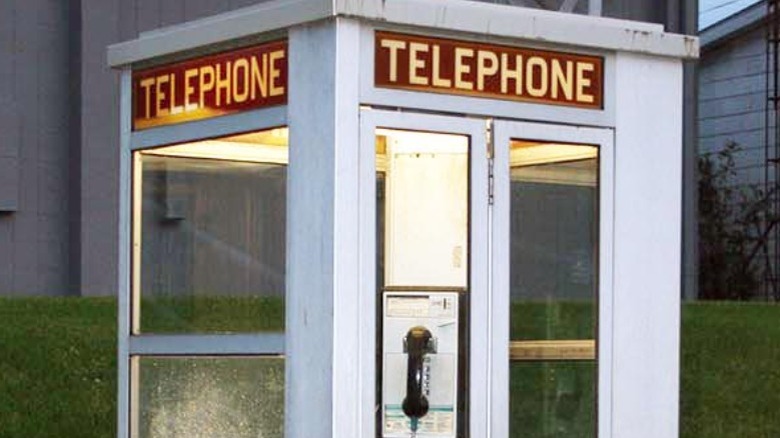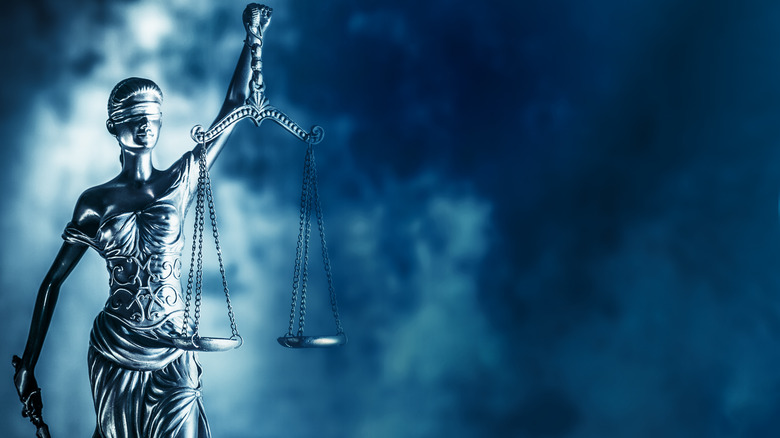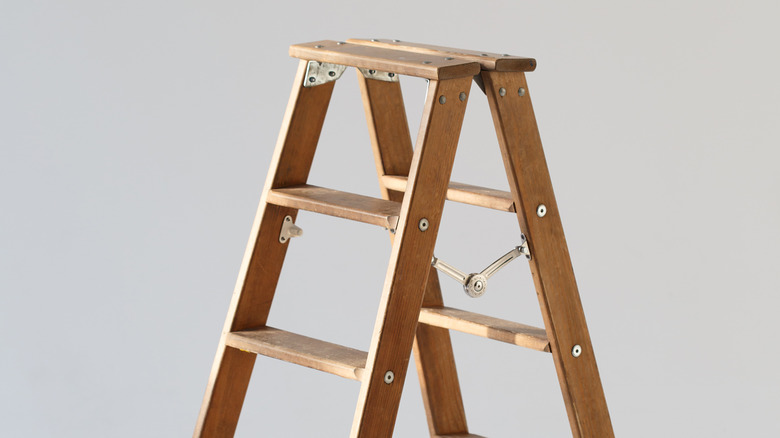Frivolous Lawsuits That Weren't Actually That Frivolous
Tort laws are used to determine who's legally liable for an injury and how those injuries are compensable. And starting in the 1980s, there was a tort reform campaign in the United States that "promote[d] personal responsibility in society, where an excessive reliance on compensation through tort liability saps individual will and responsibility," Jay Feinman writes in "Un-Making Law."
As a result, many lawsuits were often publicized as frivolous when in fact, they involved serious injuries that companies and insurance companies wanted to avoid paying compensation for. In fact, many of the lawsuits that are often cited as frivolous are dismissed almost immediately, which is the legal system effectively doing what it claims to do, as Michael Hobbes notes in "You're Wrong About." And those that are constantly brought up as examples of frivolous lawsuits that got massive payments for an unjust reason are almost always misrepresented as such. Even when juries award the plaintiff, the amounts are almost always decreased by judges or during appeals. Many of these lawsuits have been cited by lawyers and comedians alike, but the details of these cases reveal that there's always more than meets the eye.
Man in the phone booth
On November 2, 1974, in Los Angeles, California, Charles Bigbee was making a call in a phone booth when Leola Roberts crashed into the booth with her car. According to UC Berkeley School of Law, others nearby were able to get out of the way in time, but Bigbee was trapped because the phone booth door jammed. "Trapped inside, he threw his coat over his head. When the car struck the booth, the glass shattered around him and cut into his body," the school says. After the crash, Bigbee recalled that he knew immediately that he would lose his right leg as a result of the crash. Although Roberts was visibly intoxicated, a blood alcohol test wasn't taken. Bigbee's attorney stated that this was likely the case because the police knew that her son was an LAPD officer.
Bigbee lost one of his legs and was unable to work. With mounting medical bills, in 1975, he filed a suit against Roberts, the Pacific Telephone company, and the Hollywood Turf Club where Roberts had been. The defendants eventually settled for an undisclosed amount, but Bigbee's lawsuit was turned into an example of a frivolous lawsuit, despite the fact that the booth was located in a known dangerous intersection and the door was defective. According to "The Journalist's Guide to American Law," President Ronald Reagan, who often criticized the tort system, even made a joke about the lawsuit in a 1986 speech.
The psychic and the CAT scan
When Judith Richardson Haimes went in for a CT scan at Temple University Hospital in 1976, she told Dr. Judith Hart that she had experienced allergic reactions before and asked for a non-iodine-based dye. But instead of listening to Haimes, Hart said she was being ridiculous. According to "Distorting the Law" by William Haltom and Michael McCann, Haimes went into anaphylactic shock almost immediately. For many days afterward, she experienced extreme nausea, vomiting, headaches, and hives. And even after many of the effects dissipated, Haimes continued to suffer intense headaches "whenever she attempted deep mental concentration."
Ten years later, Haimes sued Temple University Hospital, stating that due to the headaches caused by the allergic reactions, she could not continue her work as a psychic. Haimes testified that she was born with the ability to read people's auras and could tell the future and give warnings, but after the allergic reaction, she lost her ability along with her only source of income. In addition, "she attributed the death of her 20-year-old son to her inability to read his aura," Bettyann Kevles writes in "Naked to the Bone."
Although the jury awarded Haimes $986,000, this verdict was overturned by judges, and a new trial was ordered. The second trial was dismissed, and the Pennsylvania Superior Court affirmed the ruling in 1991. In the end, Haimes got nothing for her pain and suffering.
One hug later
In 2011, Jennifer Connell was at her 8-year-old nephew Sean Tarala's birthday party when he leaped into her arms for a hug, causing her to fall and break her wrist. After the accident, Connell's insurance company offered only $1 to compensate for her medical bills. Per The Washington Post, under Connecticut law, "an insurance company couldn't be named in a lawsuit, so Sean, whose excited hug accidentally left his aunt with a broken wrist, had to become the defendant."
In order to pay her medical bills, Connell sued her nephew for $127,000, but because it was a tort lawsuit, the compensation would be paid out by the insurance company. Connell testified that not only did she have large medical bills to pay, but the injury left her wrist disabled and unable to bear the weight of even a small plate. The Washington Post writes that even though the lawsuit was the only way to get her homeowners insurance to pay for the cost of her care, the jury ultimately ruled against Connell. Still, Quartz reports that despite Connell only technically suing her nephew, she became vilified and branded an "aunt from hell" and the "worst aunt ever" by both news and social media.
The infamous hot coffee
After 79-year-old Stella Liebeck spilled scalding hot McDonald's coffee on herself in Albuquerque, New Mexico, on February 27, 1992, she became the punchline to every late-night joke, with everyone from David Letterman to Jay Leno poking fun at her. But as Thomas Koenig and Michael Rustad note in "In Defense of Tort Law," few people knew about what really happened during the accident "because the tort reform lobby won a public relations victory by framing the media coverage of this lawsuit."
When Liebeck removed the lid in a parked car, coffee that was between 180 and 190 degrees spilled onto her lap and was absorbed by her sweat pants. Liebeck was hospitalized for a week due to third-degree burns on her groin, inner thighs, and butt. Public Citizen writes that Liebeck underwent several skin grafts and was disabled after the accident. Liebeck initially tried to get McDonald's to pay her medical bills, but after they offered her a paltry $800, she filed a product liability lawsuit. During the trial, it was revealed that over the previous 10 years, McDonald's had paid out settlements of more than $500,000 related to over 700 reports of burns from their hot coffee.
Although a jury awarded Liebeck $200,000 in compensatory damages and $2.7 million in punitive damages, a judge reduced the punitive damages to $480,000. But before appeals were heard, an undisclosed settlement was reached.
The faulty ladder
In the 1980s, President Ronald Reagan poked fun at another tort law case involving a workman who sued a ladder company after falling off their ladder. And in 1986, even "60 Minutes" ended up profiling the owner of the ladder manufacturing company, who claimed that he was the victim of a $300,000 jury verdict because the workman set the ladder in a pile of manure. But according to Washington Monthly, manure actually had nothing to do with the actual lawsuit. Instead, the lawsuit was filed because the ladder broke while bearing less than 450 pounds, "even though it had a safety rating that said it could support up to 1,000 [pounds]."
In "Lawyers, Lawsuits, and Legal Rights," Thomas F. Burke says the ladder broke apart, causing the man to fall and severely injure his leg. But the owner of the ladder company said that "the lawsuit alleged the company should have warned buyers of the dangers of setting ladders in dung," leading to the lawsuit becoming one of the frivolous lawsuit anecdotes. Meanwhile, ABA Journal writes that "60 Minutes" interviewed several jurors in their segment, who even stated in the segment that they awarded the $300,000 because the defective ladder was responsible for the man's injuries.





